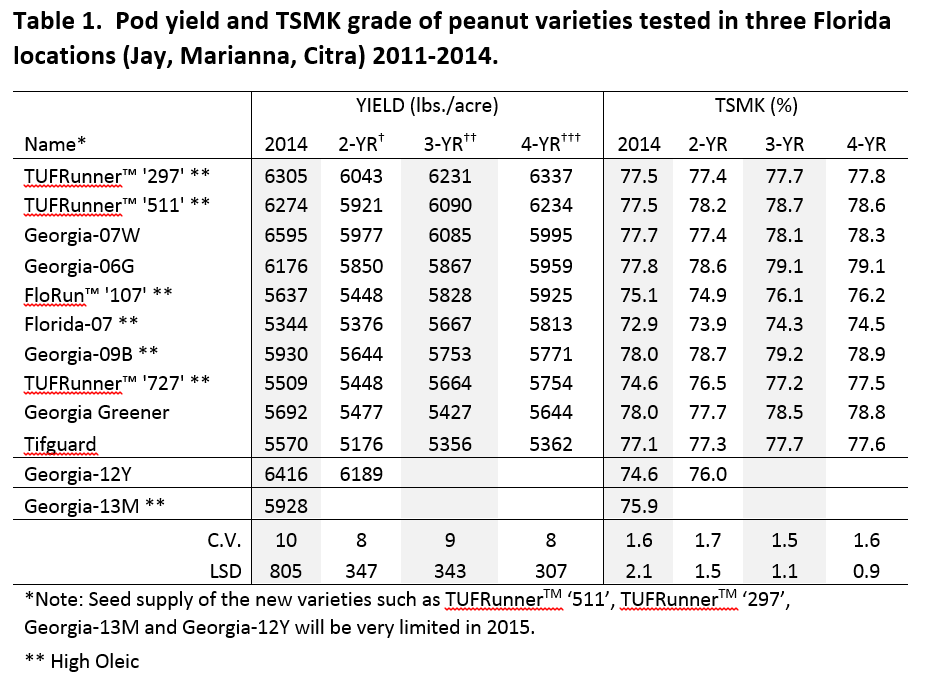
Peanut planting season is months away, but it’s not too early to begin choosing varieties to plant. The 2014 variety performance data is hot off the press and can provide a tool to compare and contrast peanut varieties. Table 1 presents the University of Florida peanut variety performance from 2011 through 2014 for pod yield and grade (TSMK = Total Sound Mature Kernels). Yields and grades among the varieties can be compared within a column for one, two, three and four years. The three and four year averages are the best indication of long-term performance.
This chart has several new varieties including TUFRunnerTM ‘297’ and TUFRunnerTM ‘511’, two new high oleic, large seeded runners from the University of Florida and Georgia-12Y (normal oleic) and Georgia-13M (high oleic) from the University of Georgia. In general, there are many very good peanut varieties to choose from based on yield and grade. There are other important factors to consider, especially in an era of low prices where small benefits can add up over the farm.
Seed size varies greatly among these varieties with FloRunTM ‘107’, Georgia-09B, and Georgia Greener and Georgia-13M having the smallest seed (more seed per pound). Compared to planting varieties with larger seed such as Georgia-06G or Florida-07, planting costs can be reduced by planting one of the smaller-seeded varieties. Disease resistance is also an important factor in comparing varieties. Those with good resistance to leaf spots and white mold such as TUFRunnerTM ‘727’, Tifguard, and Georgia-12Y can produce well even when sprayed with the less expensive, protective fungicides such as chlorothalnil (Bravo and other generics) and tebuconazole (Folicur and other generics). Other varieties with more susceptibility to leaf spot and/or white mold will likely benefit from fungicides with better disease control attributes which are also more expensive. Note also that there are seven high oleic varieties, the first time that the majority of the varieties in the UF test were high oleic. Over the past two years, some contract premiums have been offered for high oleic production.
For more information on growing peanuts, please see the following UF/IFAS Publications:
Peanut Production
 0
0
